Making Cassava bread (Belize 2009)
Cassava bread (also known as Ereba) is a staple food in many tribal villages in Central and South America. Making Ereba is a labour intensive process I was happy to witness a in a small Garifuna village of south Belize.Cassava is the root of perennials shrub that grows three to six feet tall and has a large palmate leaves and greenish, yellow to greenish, purple male or female flowers. While cassava was originally grown in a savannah climate, it can also be grown in climates with heavy rainfall. This root is classified as bitter or sweet depending upon the quantity of cyanogenic glycoside (cyanide) present. The amount of cyanide present is determined by climate and soil conditions but since the cyanide is a toxin, cassava must be usually cooked before it is eaten. Cassava produce more calories per unit of food than any other crop in the world, except for the possibly sugar cane. For this reason, cassava is a staple crop for close to 500 million people in Central America, South America, Africa and Asia. One still needs to eat fruits, vegetables and protein products as cassava lacks in vitamins, minerals, and proteins. In Africa, however, this is not so much a problem as the much needed vitamins and protein are obtained by eating cassava leaves as vegetable.
While harvesting has been traditionally done by women, today it is not uncommon for men to help with the harvesting of cassava. Once the root is out of the ground, it must be handled with the utmost of care as damage means a very short shelf life. Within 48 hours, cassava must be prepared or temporarily preserved by encasing it in paraffin or wax, peeling and freezing the cassava, strong it in a plastic bag, packed in moist mulch. These measures can extend the shelf life to three or four weeks allowing for exportation. Cassava bread has a much longer shelf life than the cassava root and when it is not exposed to moisture can be kept for several years.
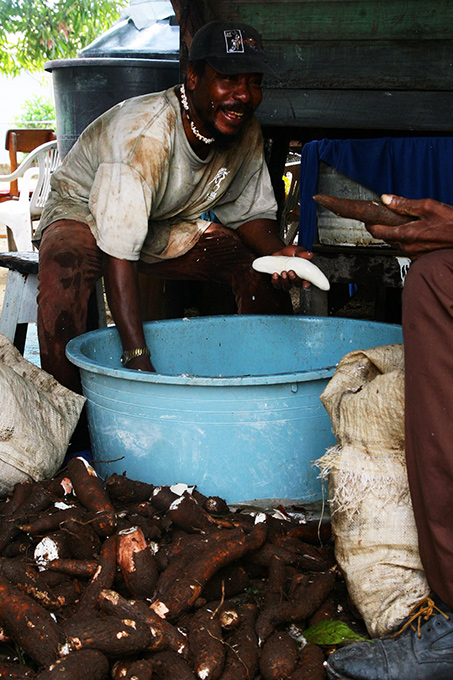
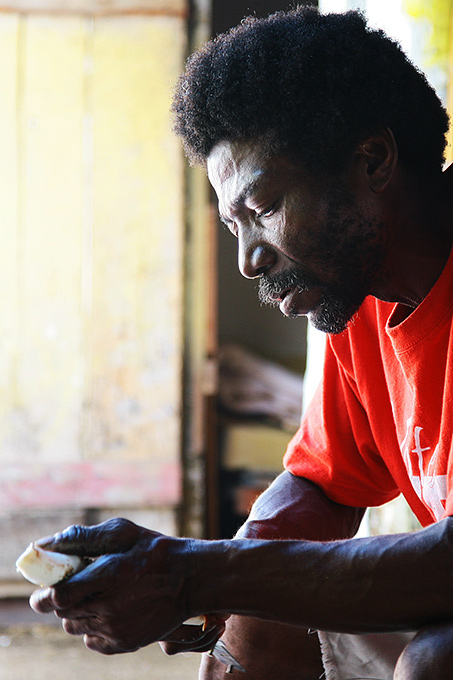
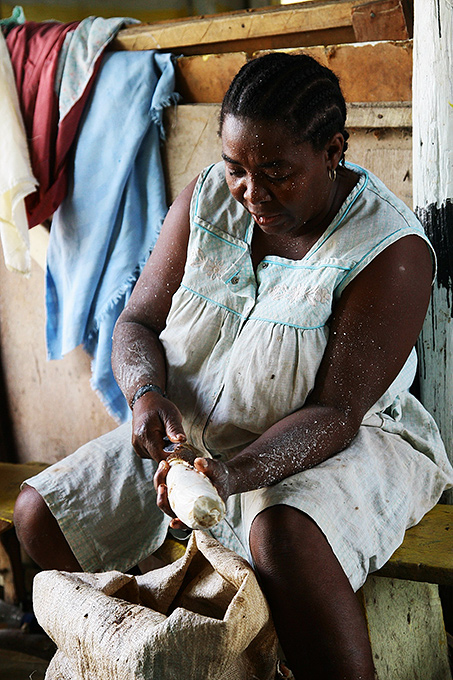
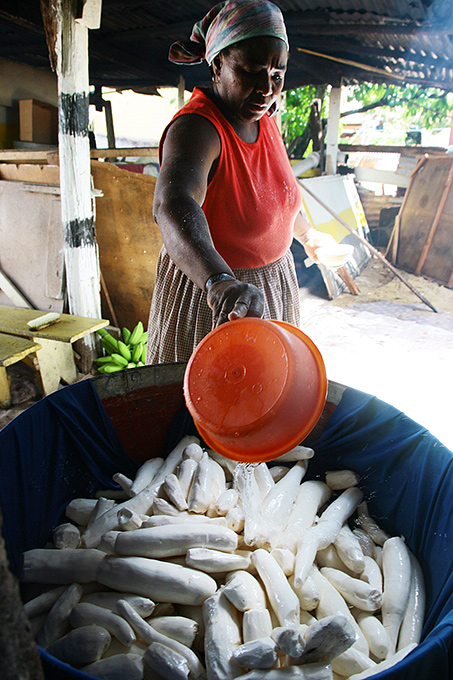
Once the cassava has been transported back to the village outer layer must peeled and then the root soaked in a tub of water. Grating follows either by using a handmade grating board or more recently using an electric grater. This handmade grater, called and "egi", is a wooden board embedded with quartzite bits which protrude just enough to pulverize the cassava root as it is passed over it. Historically, the women sang "Eremwu Euu", a traditional grating song while accomplishing this laborious task.
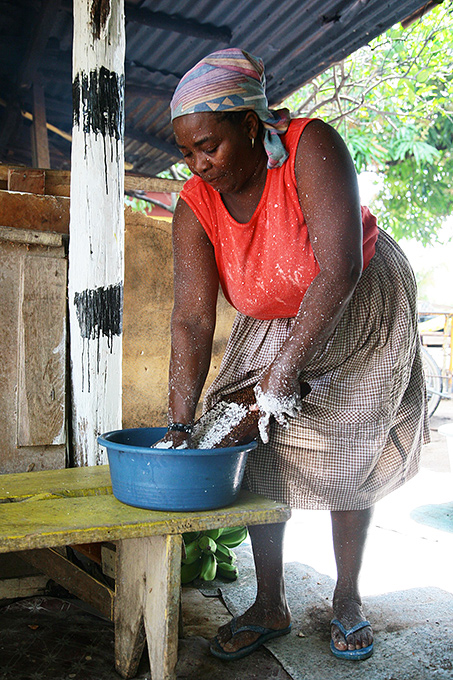
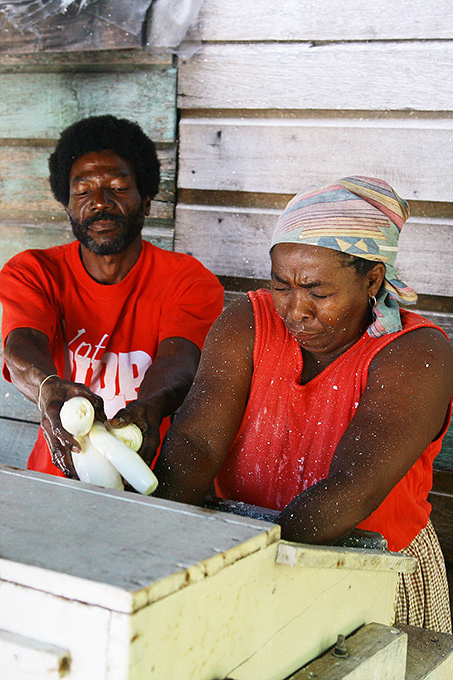
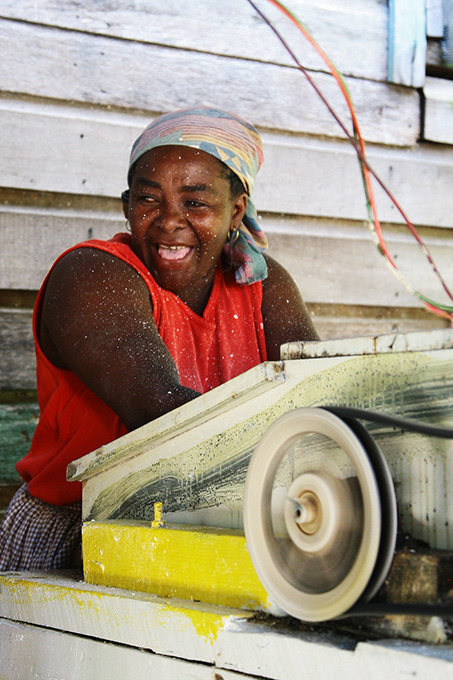
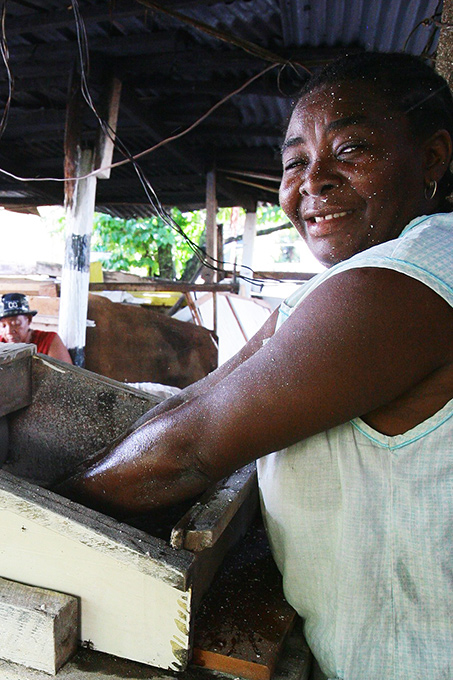
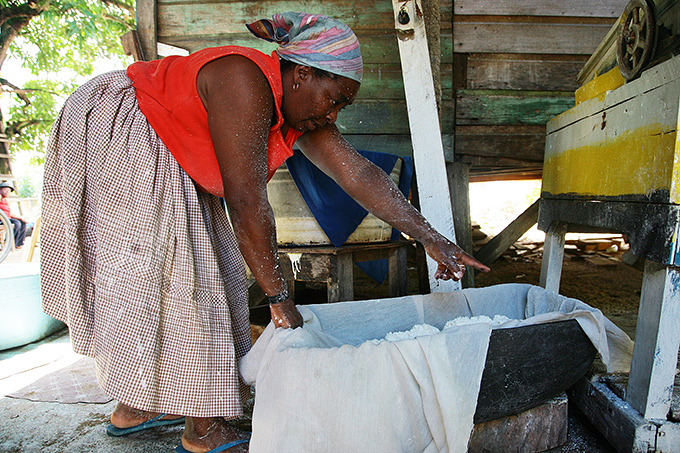
The flour contains cyanogenic glycoside that will need to be drained. The flour is stuffed in a long, snake like woven basket called "ruguma" which is then attached to a tree limb. The other end is attached to a long weighted pole. While the weight of the flour and the gravitational pull cause the toxic juice to come rushing out, the weight of the men or women who sit on top of the pole make the task go faster.
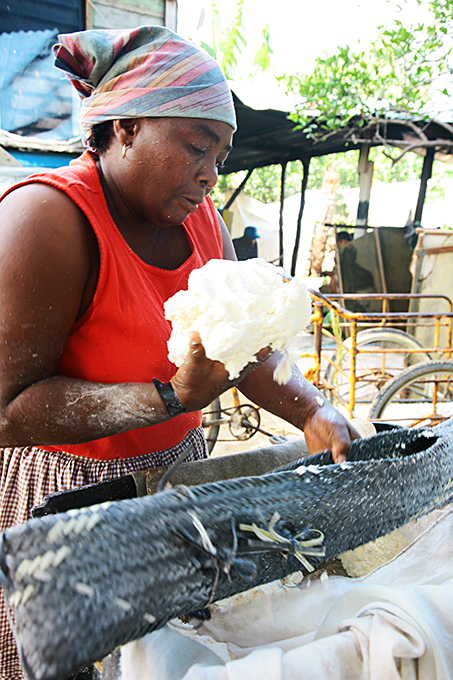
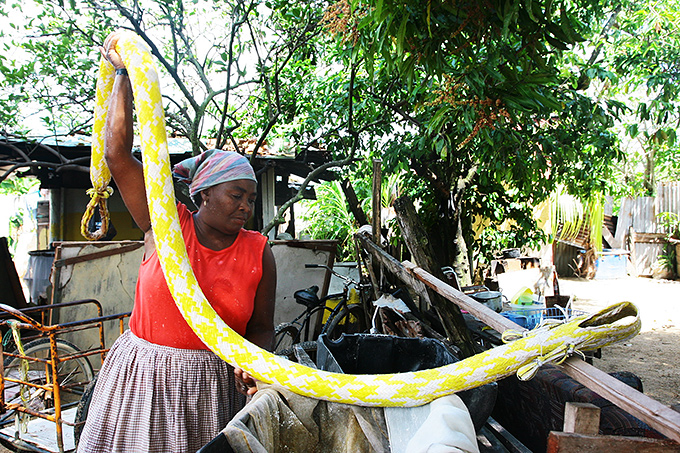
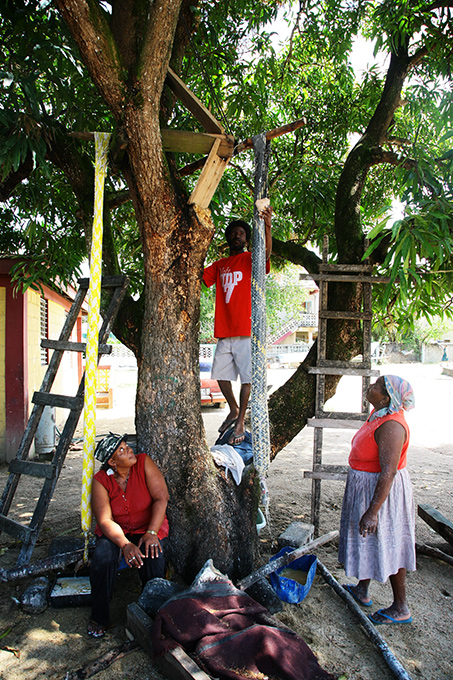
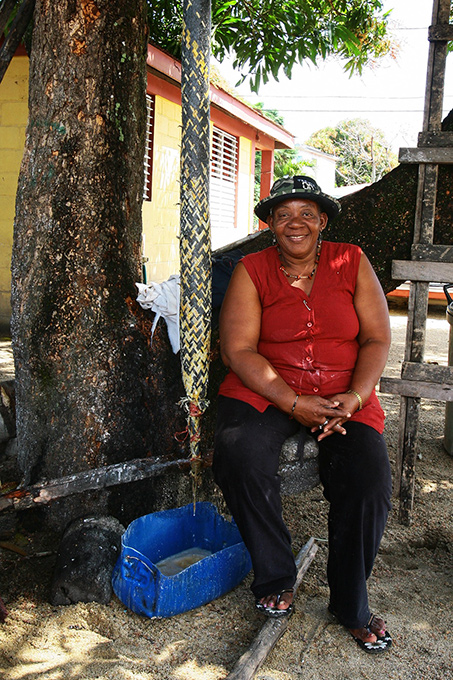
The cyanogenic glycoside juice has various uses. It can be used as a starch agent or when boiling and sweetened in the sun it can be used as an antiseptic, to help preserve meat and to flavour foods. This preservative is called "carareep". In addition, the fermented juice makes intoxicating liquor.
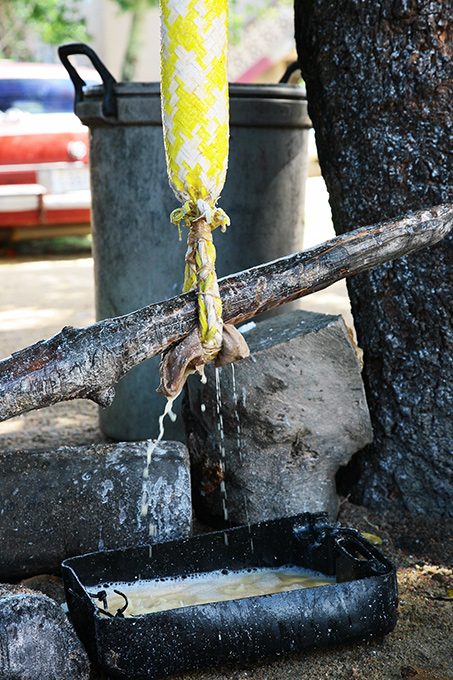
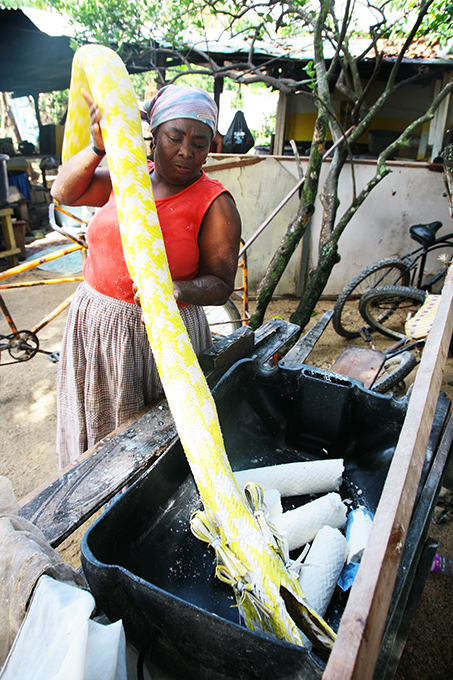
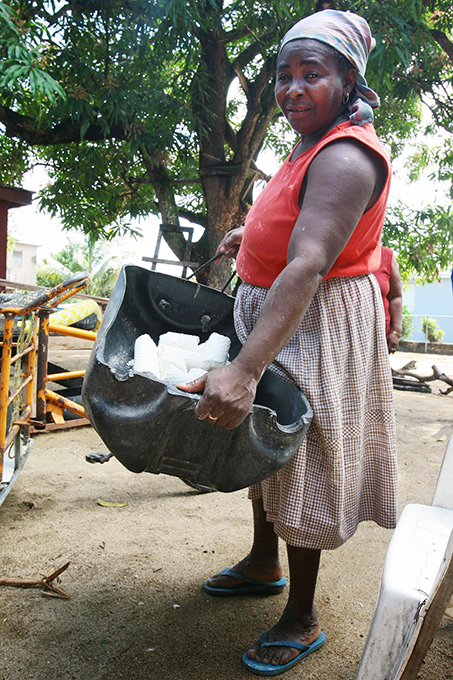
Following the juice extractions, the flour is baked on a thick iron "comal", heated with firewood. It takes approximately six big bags of cassava roots to make approximately forty cassava bread. The size of the bread will differ with the size of the comal.
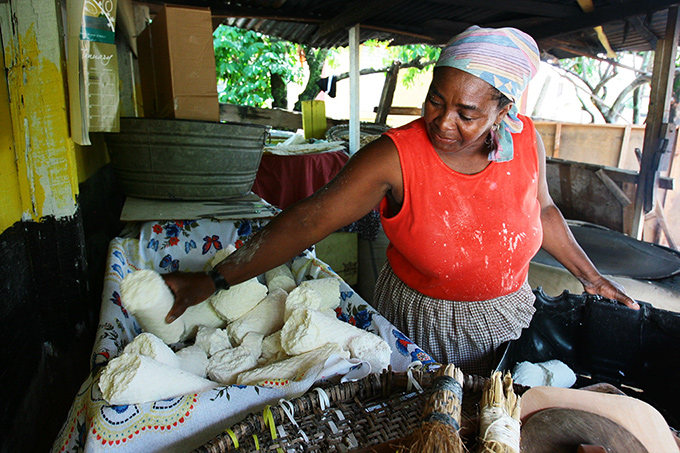
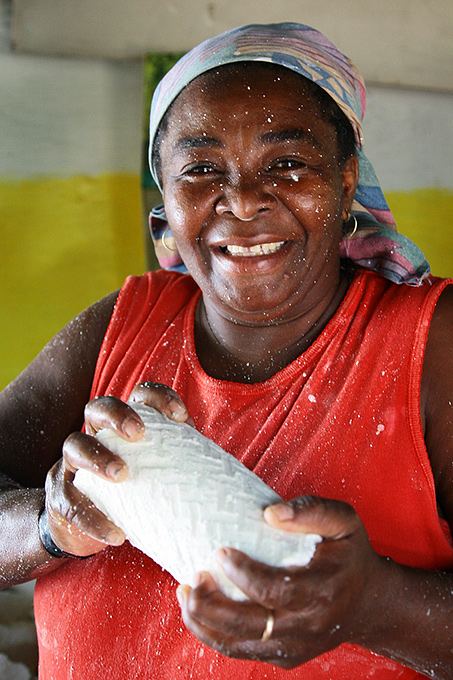
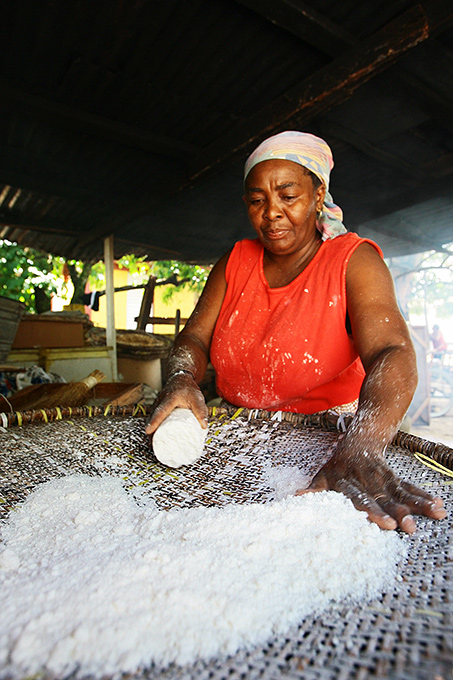
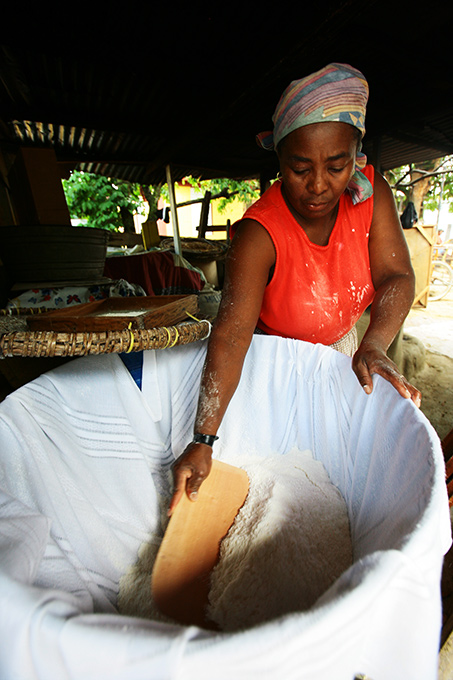
Involving a traditional process and being used in rituals making and consuming of cassava bread spiritually connects Garinagu ("Garifunas") with their past and ancestors. Being a natural resource cassava gives the Garinagu strong sense of the land it comes from and finally as it is a daily bread which requires a group effort to produce, the process of preparation brings the Garinagu closer to each other. Making cassava bread is a time for socialization. It is a time that helps to unify the committee and it gives Garifuna women a strong sense of purpose and accomplishment.
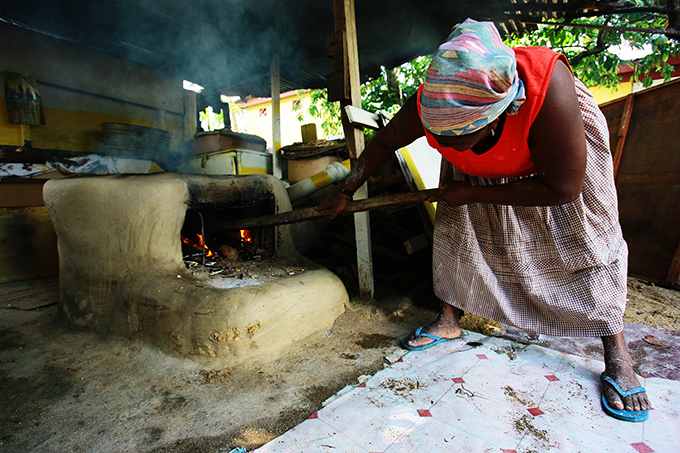
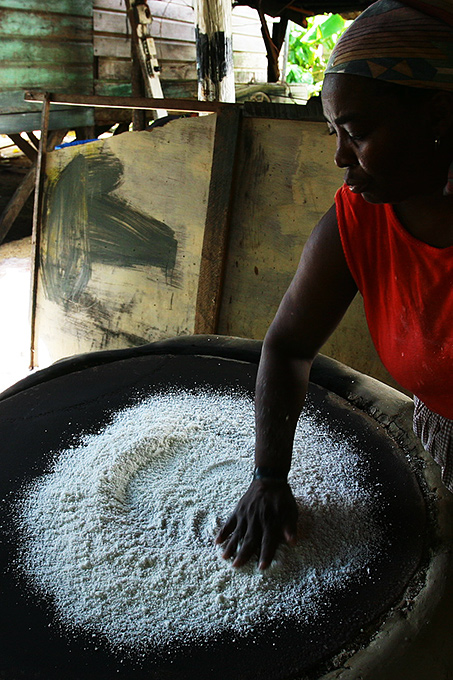
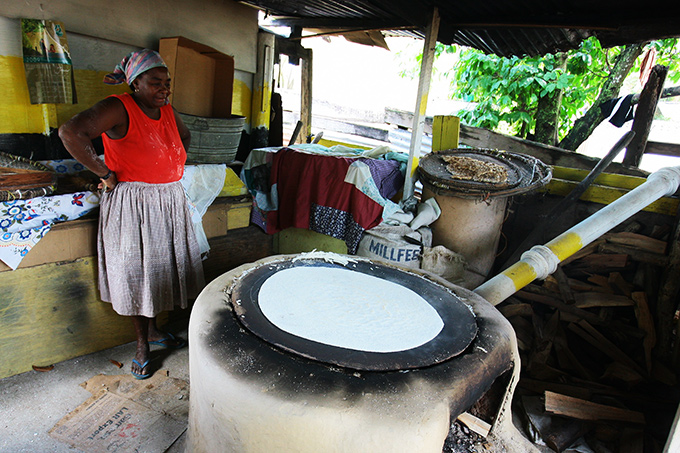
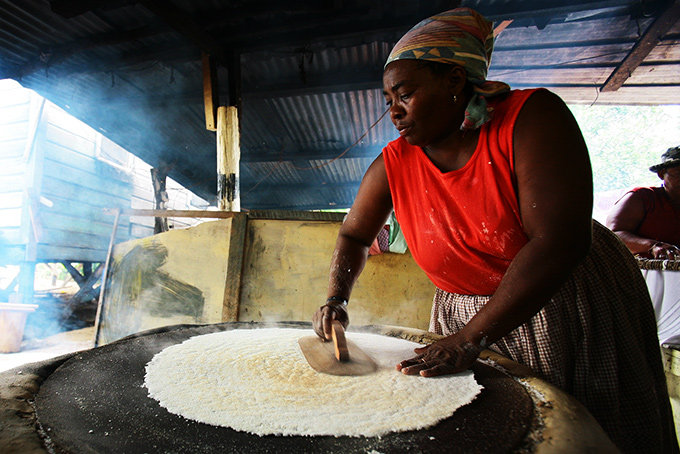
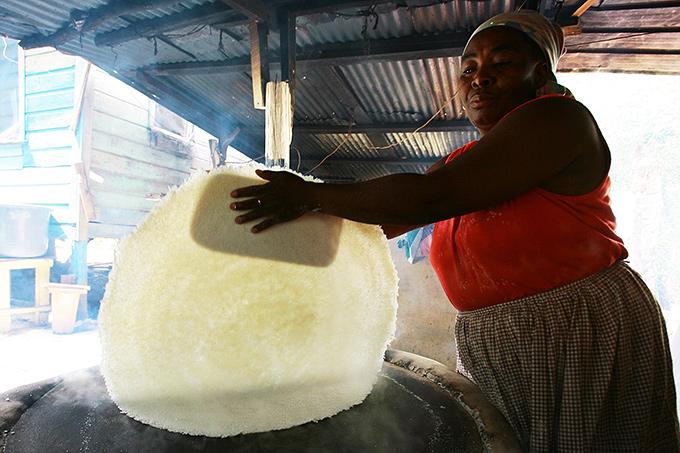
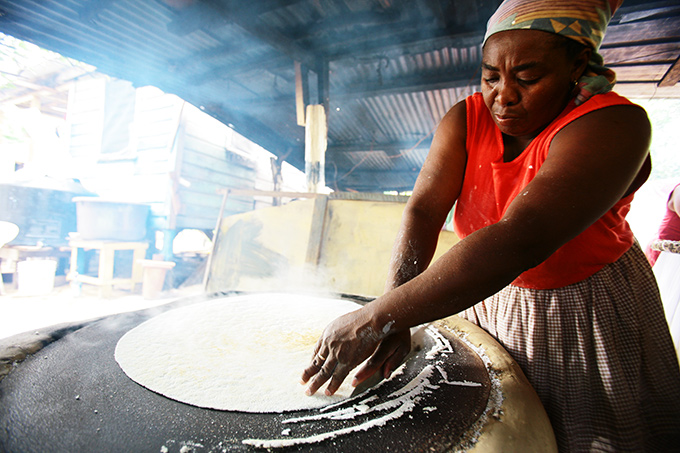





















No comments:
Post a Comment